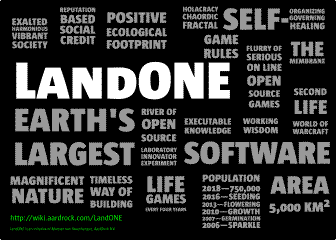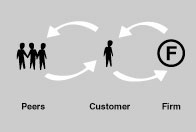While on the topic of fonts, the [http://www.lucasfonts.com/lucasfnt/sun/sun-.html Sun font] is my standard and favorite, as you can [http://aardrock.com see on AardRock’s home page]. The Sun font is designed by [http://www.lucasfonts.com/ Lucas de Groot] from [http://www.fontfabrik.com/ FontFabrik]. Even [http://en.wikipedia.org/wiki/Lucas_de_Groot Wikipedia has a page on Lucas de Groot].
Category: english
I’ve got something with fonts. Especially sans fonts. A couple of months ago, I got a small booklet handed out by Premsela titled “[http://www.morf.nl/inhoud/morf_nr4/artikelen/index/-/nl Morf 4]”. Martin Majoor writes about the correct use of typography in is article [http://www.morf.nl/inhoud/morf_nr4/artikelen/04_06_majoor/-/en Did the French king have shoe size 49?]. Nice and clean piece of work on emdashes, endashes, single qoutes and apostrophes among other things.
Can’t find a home page on Majoor or any other good source to contact him. Any help is appreciated.
Quickly jotted down a few inspirational sources for ”’fair money distribution games”’:
*http://www.econoclass.com/games.html
*http://www.frisch.uio.no/firstnordic/Hole-Final-paper.pdf
*http://www.sciencemag.org/cgi/content/abstract/300/5626/1755
*http://www.aueb.gr/imop/papers/pente.pdf
*http://www.google.com/search?q=fair+money+distribution+game
Based on these sources as well as input from [http://authenticiteit.nl/ Gaston Vilé], [http://www.vernieuwendmanagen.nl/ Stanley van Maaren] en [http://harryvandervelde.nl/ Harry van der Velde], I wrote up ”'[http://wiki.aardrock.com/Oprechte_deelgeving oprechte deelgeving]”’ (Dutch).
Thoughts?

From http://www.joost.com/about.html:
:What’s Joost? It’s free TV, with the choice to watch alone or with friends. Joost is packed with internet tools such as instant messaging and channel chat, allowing people to really share the TV experience.
:It’s a completely secure platform for content owners that respects their rights, while protecting and enhancing their brands. And it’s an incredibly flexible way for advertisers to reach a truly global audience, in ways that really work. Joost isn’t just video on the internet – it’s the next generation of television for viewers, content owners and advertisers everywhere.
Grown from a handful of people in a small office outside Amsterdam. [http://en.wikipedia.org/wiki/Niklas_Zennström Niklas Zennstrøm] and [http://en.wikipedia.org/wiki/Janus_Friis Janus Friis]—KaZaa, Skype. Peer-to-peer. Community. Promising. I wish them a lot of succes!
Interesting new way of distributed collaboration…
TextBender is a system of collaborative writing based on recombinant text,
textbender has these characteristics:
*Your text belongs to a population, one text per author.
*Quality bits of text are swapped among authors, peer to peer.
*Individual authorship is retained and traceable throughout.
Textbender is currently ”’aimed at creative writing”’, particularly at short verse. A demonstration is being prepared.
Recombinant text is a medium of collaborative design and composition, with a basis in biological theory. In computer science, it belongs to the subfield of human-based genetic algorithms. In biological terms, it is analogous to population genetic engineering; but with populations that consist of texts.
The texts are Web documents. Intercommunication is by Web protocols, and the result is the collaborative production of Web content. Recombinant text is therefore ”’comparable to a Wiki”’. But it differs in its distributed architecture and ”’peer-to-peer communication pattern”’ (populations), ”’formalized data units”’ (genes), and ”’semantic labels”’ (loci). These place it in the arena of Web 3.0.
Several design approaches to recombinant text have been investigated to date. The ultimate approach (below top) would rely on a mechanism of gene complexing to transfer variations of plot, character, and other patterns from text to text. This approach would have a range of groupware applications in general design, as well as literary and musical composition. It would also be difficult to realize, and remains a vision for the future.
[http://zelea.com/project/textbender/ Read more on TextBender] or [http://zelea.com/var/cache/textbender-demo/textbender/a/b/demo/instructions.xht try the TextBender demo].
Yet another reputation system—a Net Promoter Score (NPS) is the result of a customer satisfaction survey in which customers are asked only one so-called “Ultimate” question:
:”’How likely are you to recommend Company or Product X to a friend or colleague?”’
Does this work for communities and personal reputation as well?
Sparkle from http://www.expertlog.nl/2007/03/meer_winst_make.html#more
[http://wiki.aardrock.com/LandONE  ]
]
Eduard Povel tipped me on the Natural Capital Institute today—helping society move towards a socially just and environmentally restorative existence.
”’All open source. Hurray!”’
Wow, what a fine initiative. I’m going to contact them to find synergy between NCI and my LandONE initiative.
Quantum Consciousness
Stumbled over http://www.quantumconsciousness.org/. Don’t want to forget about it so this is just a little reminder for me to find back later and explore…

Do consumer driven innovation, customer care and Wikinomics work? Well, at Procter & Gamble they do. Read CIO Magazine on Wikinomics.
I’m a ”’big big fan of co-creation”’ and it’s been like this ever since the great Internet technologies like mail, the web and [http://java.net Java] emerged. [http://kk.org Kevin Kelly] already wrote about it when he says: “And whoever has the smartest customers wins in his book New Rules for the New Economy.
Kelly’s strategies:
- Make customers as smart as you are.
- Connect customers to customers.
- All things being equal, choose technology that connects.
- Imagine your customers as employees.
Computer scientists and visionaries today see a future in which Web 3.0 will help us engage in virtual battles with cancer cells, keep us physically independent as we age, and achieve a deeper emotional connection to things that matter most to us.
Dana Pavel believes that technology can make a profound difference in our lives if computers can understand more about where we are and how we are feeling.
“At some point you want to do something more than accomplish tasks through technologies and devices,” said the researcher who studies affective and context-aware computing at Nokia’s Helsinki Research Center.
Seems like Nokia is working hard on this. Again, resonates with [http://wiki.aardrock.com/Slimme_Spirituele_Software Martien’s Smart Spiritual Software].
Source: http://www.internetnews.com/bus-news/article.php/3623291